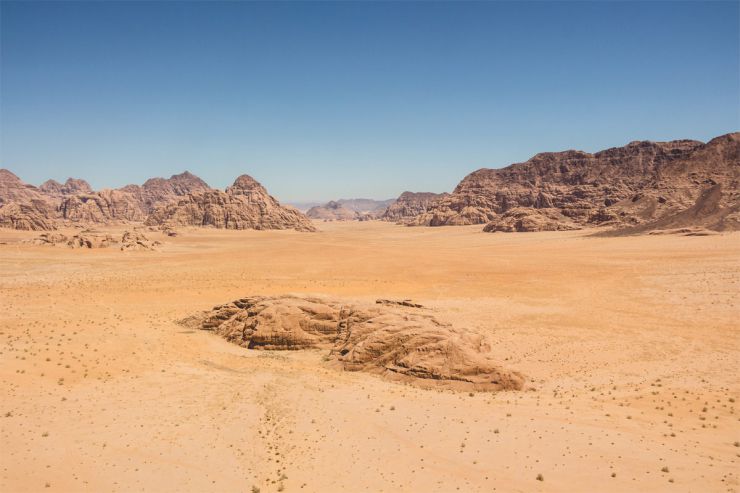Arid climates are defined by receiving less than 25.4 cm of rainfall per year, with rainfall being highly variable.1 However, arid landscapes are diverse in their soils, fauna, and flora. Arid landscapes account for ~1/3 of the total land area.2 Farming cannot usually occur without irrigation. Vegetation is scarce in these landscapes and usually consists of scattered shrubs, grasses, and small trees.
Soil forming processes in arid climates include large diurnal temperature changes which can lead to physical or mechanical breaking down of rocks, or wind erosion of parent material. Chemical weathering is slow due to a lack of water and little vegetation. Where vegetation exists, “islands of fertility” develop, whereby nutrient content, root development, and organic matter are increased under the vegetation. The water holding capacity of arid soils is usually limited by coarser textured soils, lack of structure, and low organic matter. Often, impermeable layers can exist in arid soils causing issues with infiltration and water storage and can influence which plants can exist. Salt accumulation is common in arid regions and can negatively affect plant growth. The soil order common to arid climates are Aridisols, soils which often accumulate salt, gypsum, carbonates and are found in cold and hot deserts.

Arid Photo by Julien Lavallee On Unsplash.com
Soil Health Challenges for Arid Climates
References
-
https://www.encyclopedia.com/environment/encyclopedias-almanacs-transcripts-and-maps/arid-climate
-
Food and Agriculture Organization of the United Nations. 1989. Arid Zone Forestry: A guide for field technicians. Sjöholm, H., Reynders, M.I., Salem, B. http://www.fao.org/docrep/t0122e/t0122e03.htm
